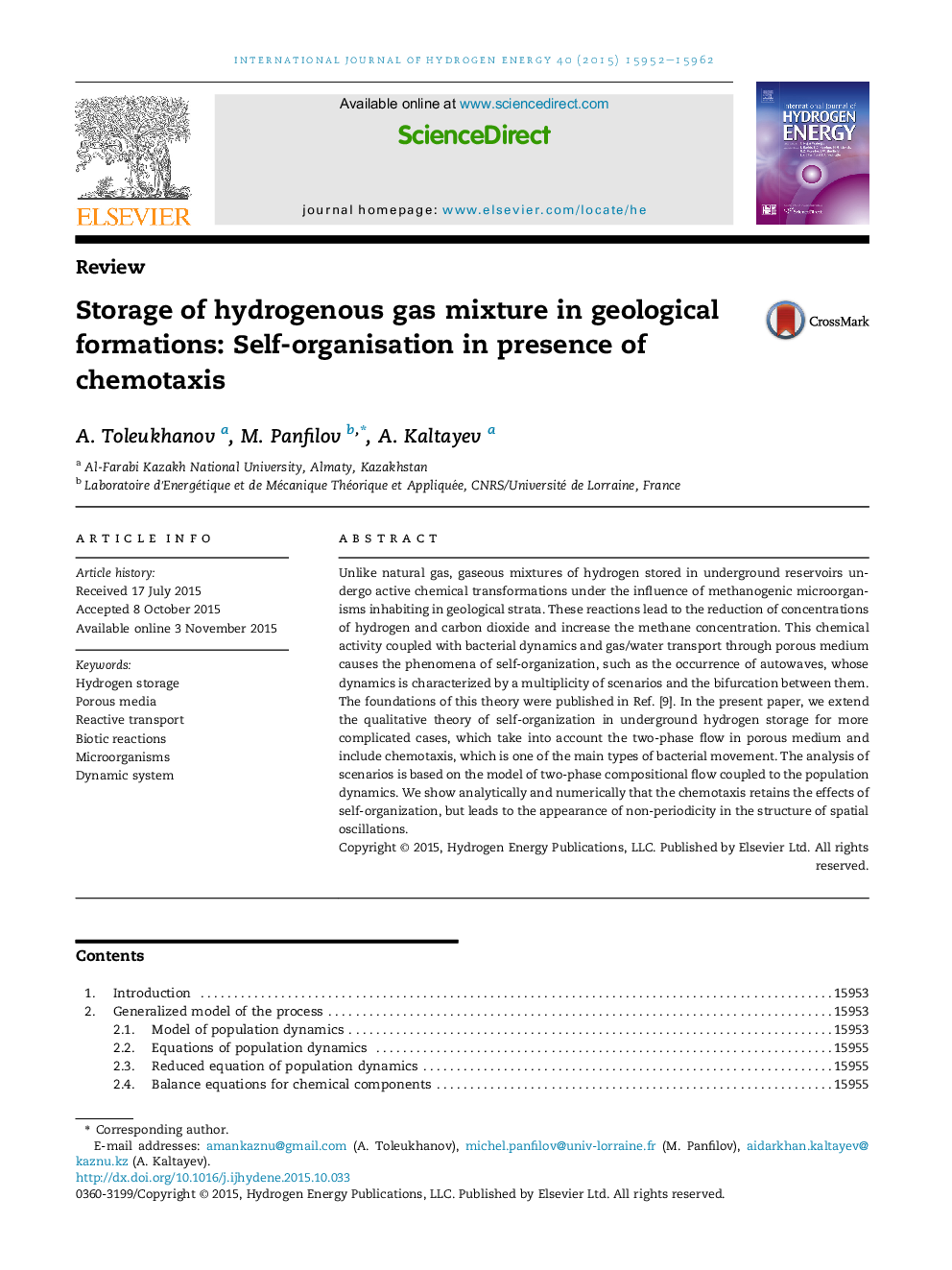| Article ID | Journal | Published Year | Pages | File Type |
|---|---|---|---|---|
| 7713098 | International Journal of Hydrogen Energy | 2015 | 11 Pages |
Abstract
Unlike natural gas, gaseous mixtures of hydrogen stored in underground reservoirs undergo active chemical transformations under the influence of methanogenic microorganisms inhabiting in geological strata. These reactions lead to the reduction of concentrations of hydrogen and carbon dioxide and increase the methane concentration. This chemical activity coupled with bacterial dynamics and gas/water transport through porous medium causes the phenomena of self-organization, such as the occurrence of autowaves, whose dynamics is characterized by a multiplicity of scenarios and the bifurcation between them. The foundations of this theory were published in Ref. [9]. In the present paper, we extend the qualitative theory of self-organization in underground hydrogen storage for more complicated cases, which take into account the two-phase flow in porous medium and include chemotaxis, which is one of the main types of bacterial movement. The analysis of scenarios is based on the model of two-phase compositional flow coupled to the population dynamics. We show analytically and numerically that the chemotaxis retains the effects of self-organization, but leads to the appearance of non-periodicity in the structure of spatial oscillations.
Related Topics
Physical Sciences and Engineering
Chemistry
Electrochemistry
Authors
A. Toleukhanov, M. Panfilov, A. Kaltayev,
